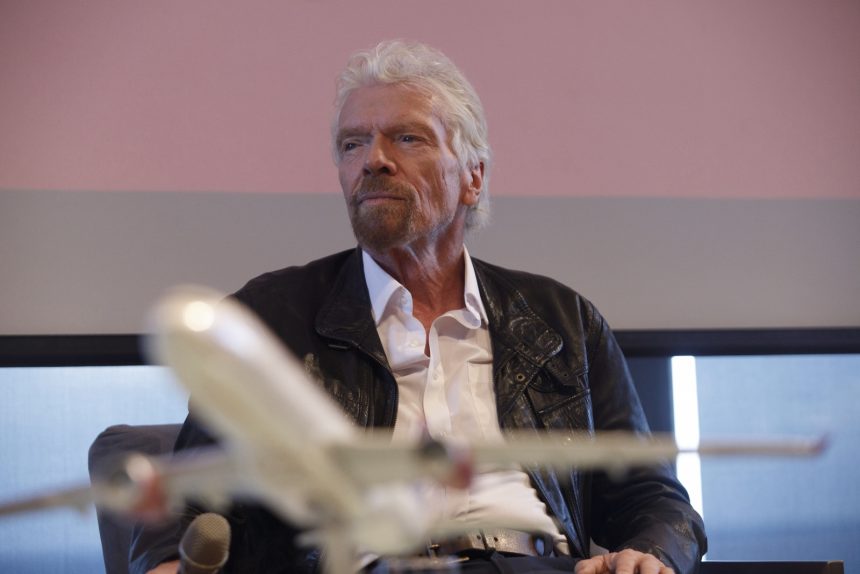The two entrepreneurs have created companies positioned in the space tourism sector, with short suborbital flights, and have worked in recent years to build and launch their companies' rockets.
According to the Portuguese newspaper "Visão", Branson will travel into space on July 11 aboard his company's Virgin Galactic ship, and Bezos will follow on July 20 in Blue Origin's New Shepard rocket, to the edge of the Earth's atmosphere.
For Blue Origin, this will be the first launch with passengers, as previous flights have only carried a test dummy. For Virgin Galactic, it is the second time a rocket has carried people (the first attempt, in 2014, resulted in an accident that caused the death of the copilot and left the pilot injured - because he managed to eject by parachute).
Virgin Galactic's VSS has six seats and is designed to reach about 50,000 feet in a twin-body aircraft, the WhiteKnightTwo. After disconnecting from the plane, the rocket starts its engines for 60 seconds to reach the 50-mile height of space. Once it reaches the highest point, the rear half of the vehicle folds upward, which creates an aerodynamically stable arrangement, and when it reaches the top of its flight path, it will give passengers a few minutes of weightlessness due to gravitational force.
After slowing down and reaching a lower altitude, the wings fold down again. The spacecraft returns to its original position and lands like an airplane on a runway, in this case at Virgin's New Mexico spaceport. The entire trip takes about 90 minutes from start to finish, and there is no toilet on board.
"When you fly with humans, it's always a more complex step than just flying an unmanned mission, and that's because you have the lives of six people you have to worry about," said Laura Forczyk, an Atlanta-based space industry consultant who has flown zero-gravity research flights with NASA several times, quoted by WIRED. "Blue Origin has no reason to fear that anything will go wrong, but you never know. Space is a risky area."
Blue Origin's flight to the edge of space, also suborbital, will last only about 10 to 15 minutes, enough time to reach an altitude that allows Bezos, his brother Mark, and four other passengers to float weightlessly. Then the capsule will return to Earth under three parachutes to land in the West Texas desert.
Shepard's new Blue Origin capsule is 100% automated. There is no pilot and passengers cannot maneuver or adjust steering. The only task the crew members have to perform is to unfasten their seatbelts and then fasten them again, so they can float and see the Earth through the capsule's windows.
Just before takeoff, Branson and the other passengers will spend three days in training at Virgin New Mexico's spaceport to familiarize themselves with the flight and review procedures, as explained by Aleanna Crane, Virgin Galactic's Vice President of Communications.
NASA astronauts stress that flying a short suborbital trip is not the same as traveling to the International Space Station. NASA vehicles, such as the now retired Space Shuttle or the new SpaceX Crew Dragon, rely on multiple booster rockets to get them into orbit, as well as complex life support, propulsion, navigation, and avionics systems that drive the rocket. Some of these systems are automated, and others require a trained pilot, such as during docking on the International Space Station (ISS).
On the other hand, these two new commercial spacecraft are simpler in design and operation, according to Doug Hurley, a NASA astronaut who piloted the first Dragon crew spacecraft to the ISS in May 2020, along with colleague Bob Behnken.
"None of this is easy," Hurley explained about human spaceflight. "We ask a lot of the vehicles, whether it's a suborbital or orbital flight, to bring the occupants and crews back safely. But certainly anyone who really understands this world knows that there is a huge difference between getting the vehicle into orbit, and getting a vehicle to do a suborbital flight."
Hurley, who has also flown on two space shuttle missions, adds that the way to reduce risks is through equipment testing and crew training. Although private space companies have not flown as many people as NASA, they have been running rigorous testing programs on their spacecraft over the past 10 years.
Both Virgin Galactic and Blue Origin's spacecraft may have a safety advantage because of their simplicity, says Garrett Reisman, a former shuttle astronaut who worked on the creation of the Crew Dragon capsule - used in the third manned flight of a space capsule by SpaceX, a private company run in April by US-based Elon Musk. "Once the engines start, there's nothing a human can do," Reisman points out about the New Shepard rocket. "It's on autopilot the whole way. They're just watching and the software is doing everything."
"Their life support is very simple and only has to run for about 10 minutes," Reisman continues. Unlike a long-duration space station mission, the two commercial suborbital spacecraft "have no carbon dioxide scrubbing equipment or anything to recycle wastewater and turn it into drinking water," he adds. "There are no bathrooms that they have to worry about. There's no spacesuit, and they don't have to worry about how they have to handle the vehicle."
Fewer systems mean fewer things to go wrong, Hurley emphasizes. However, both point out that the risks of space flight cannot be eliminated, even with redundant technological systems, testing, and crew training. Moreover, once flight becomes more routine, things can tend to go wrong.
"On the first flight, the whole team is on the lookout in case something happens-but it's important to make sure that that vigilance is maintained throughout the duration of the program, all the way to the tenth flight and the twentieth flight," Hurley adds. "Every flight is important, because every flight has people on board."

